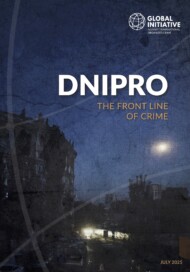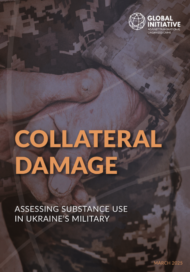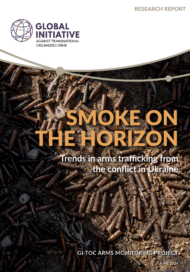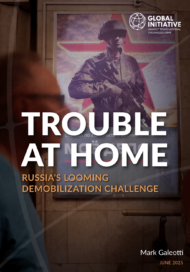Posted on 04 Jul 2025
Dnipro has long played a pivotal role in Ukraine’s political and economic development. Today, the city stands at another crossroads, as a key site for understanding how organized crime has evolved under the pressures of war. This report offers a detailed account of the city’s criminal landscape, drawing on field research, interviews, and open-source analysis.
The full-scale Russian invasion in 2022 has fuelled existing trends in Dnipro, a city already familiar with conflict since 2014. Dnipro’s proximity to the front line and its importance as a logistics and military hub have intensified its role in illicit markets, particularly in arms and drug trafficking. The city has also become one of the country’s most important bases for scam call centres, with around 30 000 people employed in operations that target victims across Russia, the EU and Ukraine itself. Many of these centres reportedly operate under the protection of law enforcement and are connected to organized crime groups. Meanwhile, corruption, which initially declined after the 2022 invasion, has made a strong comeback. Major procurement scandals, shrinking transparency and barriers to civil society participation in budget oversight suggest a renewed climate of impunity.
Dnipro’s drug economy remains resilient, with dealers reportedly targeting military personnel as clients. One trafficking group dismantled in 2024 had profits exceeding UAH10 million per month. Cases also show soldiers carrying drugs to the front or being recruited into distribution networks. While not unique to Dnipro, the city’s combination of trafficking infrastructure and military presence presents specific risks.
At the same time, the saturation of illicit weapons in the region has created a volatile environment. While organized crime groups generally avoid arms dealing, the volume of illegal stockpiles, trophy weapons and “contact-free” transactions makes Dnipro a critical node for monitoring arms flows returning from the front.
The city’s control over illicit flows —from drugs and weapons to extortion and fraud— is currently in flux. Historically shaped by figures who straddled the worlds of politics, business and crime, Dnipro has seen many of its key power brokers either exiled, imprisoned or under investigation. This has created a vacuum in which no single actor dominates, leaving the city open to new contests for control. At the same time, groups from Dnipro have spread across Ukraine, looking for safer places to work, including Odesa and Kyiv, raising the risk of increasing crime in those cities and beyond.
The report concludes that the city’s trajectory will depend on shifting political allegiances, the outcome of the war, and the extent to which Kyiv can reassert control. With national-level implications, Dnipro should be a key focus for any efforts to understand or disrupt Ukraine’s evolving organized crime landscape.




